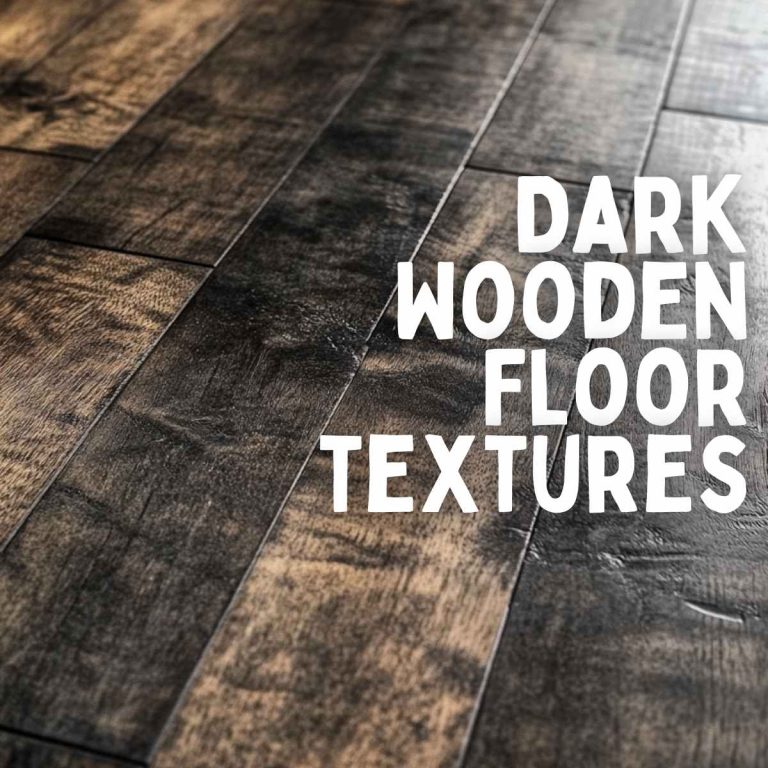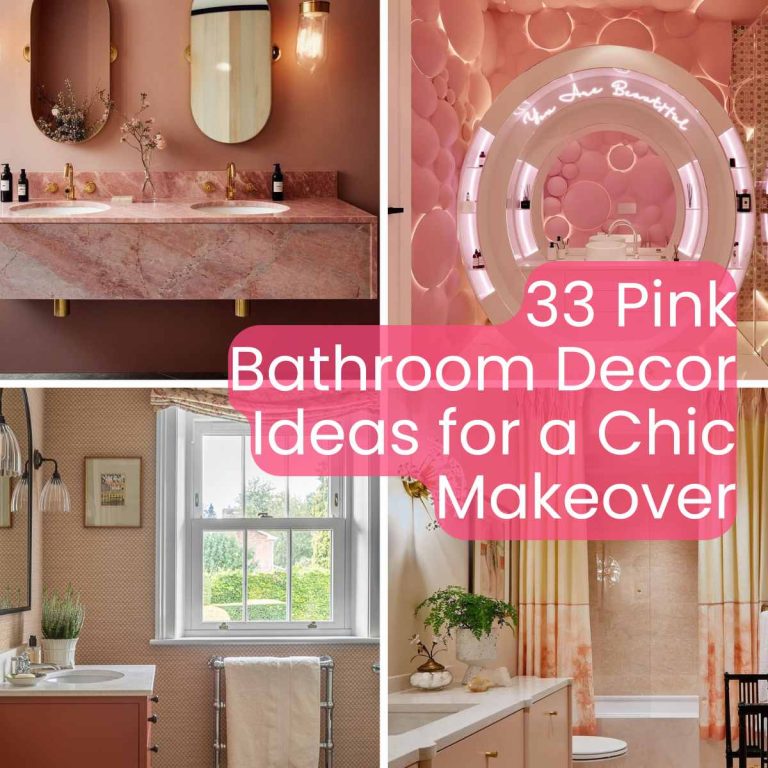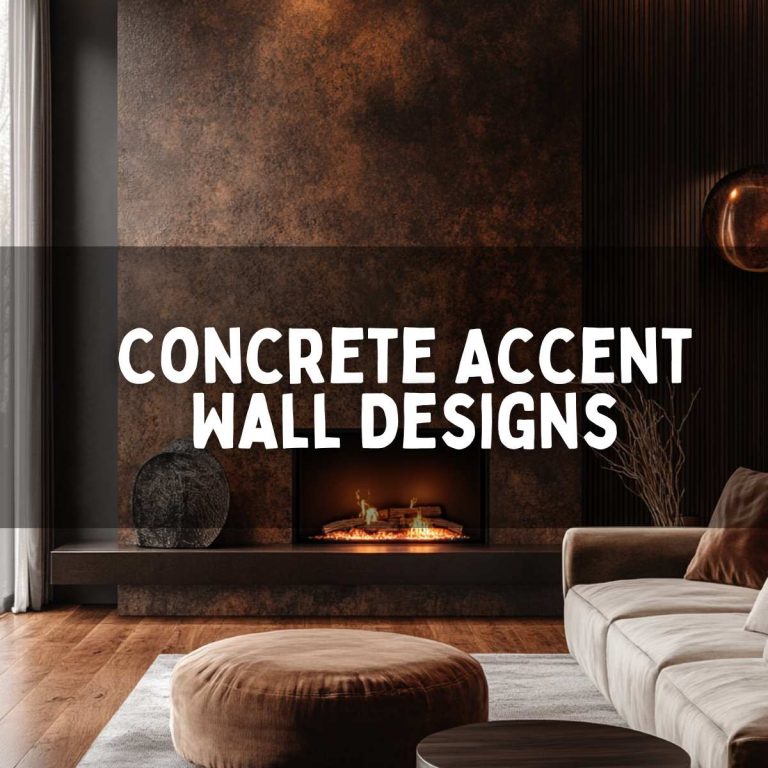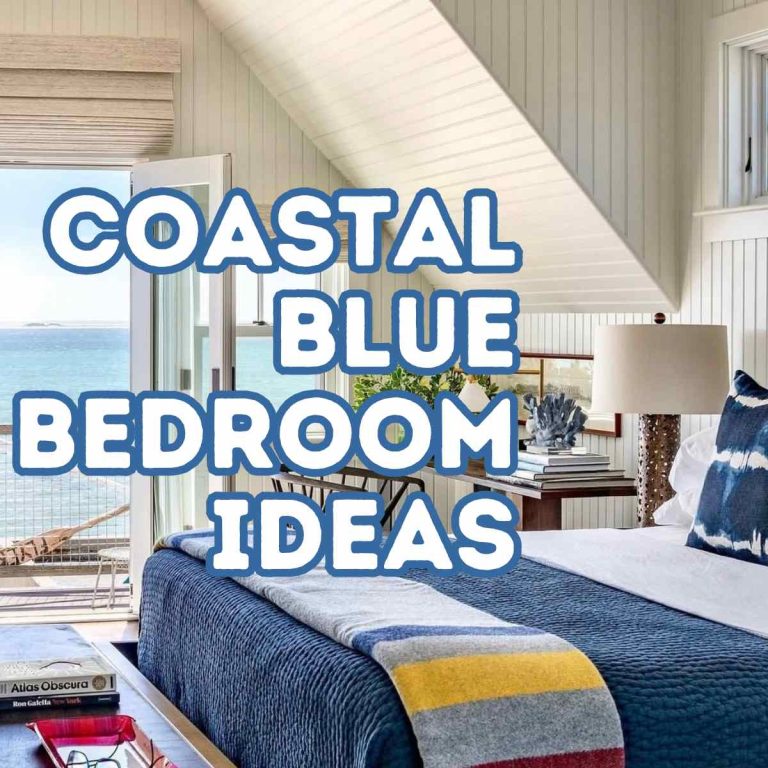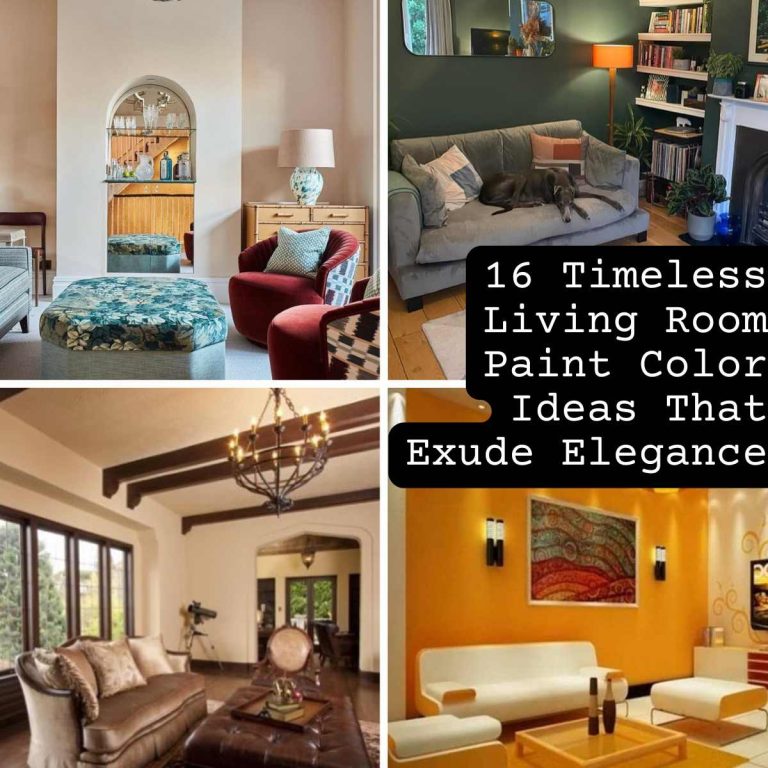The Art of Minimalist Living Room Designs
What is Minimalism?
Minimalism is more than a visual style—it’s a lifestyle philosophy rooted in intentionality. It emerged as a cultural response to the chaos of consumerism, encouraging people to live with less but better. In interior design, minimalism favors clarity, clean lines, and purposeful spaces. It’s not about creating cold, bare environments, but about choosing every element with care.
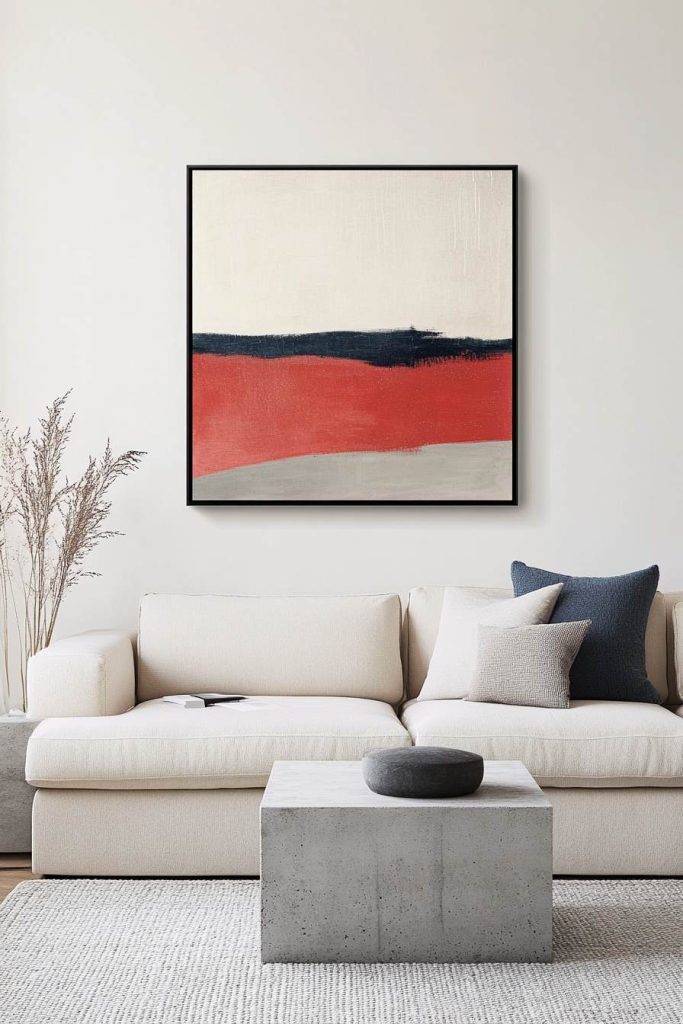
In the context of a living room, minimalism aims to create an atmosphere that is calm, functional, and effortlessly elegant. A minimalist living room prioritizes breathing room—physically, emotionally, and visually. It’s a place where quality triumphs over quantity, and each object contributes to the serenity of the space.
Why Minimalist Design Matters Today
In today’s fast-paced world, our living spaces often mirror the clutter of our minds. Work stress, digital saturation, and constant stimulation have led to a craving for quietude and simplicity. The minimalist living room offers an antidote. It’s where you can unwind, recharge, and feel truly at home.
With the rise of remote work and multi-functional homes, living rooms now need to be flexible and restful. Minimalist design helps strip away distractions, so you can be present in your environment. It’s not just a style—it’s a form of self-care and mental clarity translated into design.
Core Principles of Minimalist Interiors
Simplicity and Functionality
At the heart of every minimalist interior is a deep commitment to simplicity. This doesn’t mean the absence of style—it means streamlined decision-making. Every piece of furniture, decor, and design feature serves a purpose. The layout is intuitive, traffic flow is unrestricted, and no space is wasted.
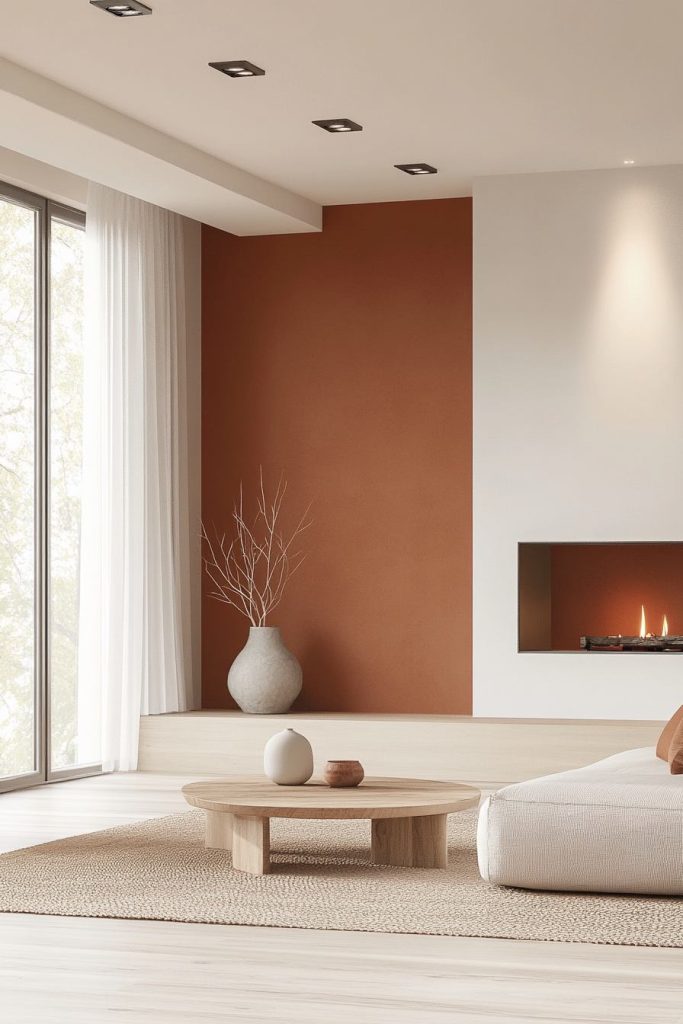
Functionality drives every design choice. Storage is built-in or cleverly concealed. Seating is comfortable without being oversized. Decorative objects are kept to a minimum, yet each one is chosen with intent. The result is a space that feels effortless and unobtrusive, yet beautifully considered.
Clean Lines and Open Spaces
Minimalist design relies heavily on geometry. Clean, straight lines or gently curved contours define the form of furniture, lighting, and architecture. Visual noise—like excessive ornamentation or clutter—is minimized to let the structure of the room speak for itself.
Open space plays an equally important role. Negative space, or “white space,” gives the room room to breathe. It emphasizes proportion and placement, letting each element stand alone as part of a cohesive whole. Open areas aren’t empty—they’re active participants in the design language.
“Less is More” Philosophy
Coined by architect Ludwig Mies van der Rohe, “less is more” is the mantra of minimalist design. It doesn’t mean living without—it means living with enough. In a minimalist living room, fewer pieces mean greater freedom. You experience each material, texture, and shape with heightened awareness. The fewer elements you include, the more impact each one has.
This philosophy invites you to be deliberate with your choices. Whether it’s a single piece of artwork, a sofa with architectural simplicity, or a sculptural light fixture, each item is chosen for its ability to enhance the overall calm and cohesion of the space.
Benefits of a Minimalist Living Room
Mental Clarity and Reduced Stress
Visual clutter is a known contributor to cognitive overload. In contrast, a minimalist living room acts like a breath of fresh air for the brain. With fewer distractions, your mind can rest. It’s easier to relax, focus, and feel grounded when your surroundings are calm and orderly.
Studies show that spaces designed with minimalism in mind reduce anxiety and promote emotional well-being. The connection is direct: a clearer space leads to a clearer mind.
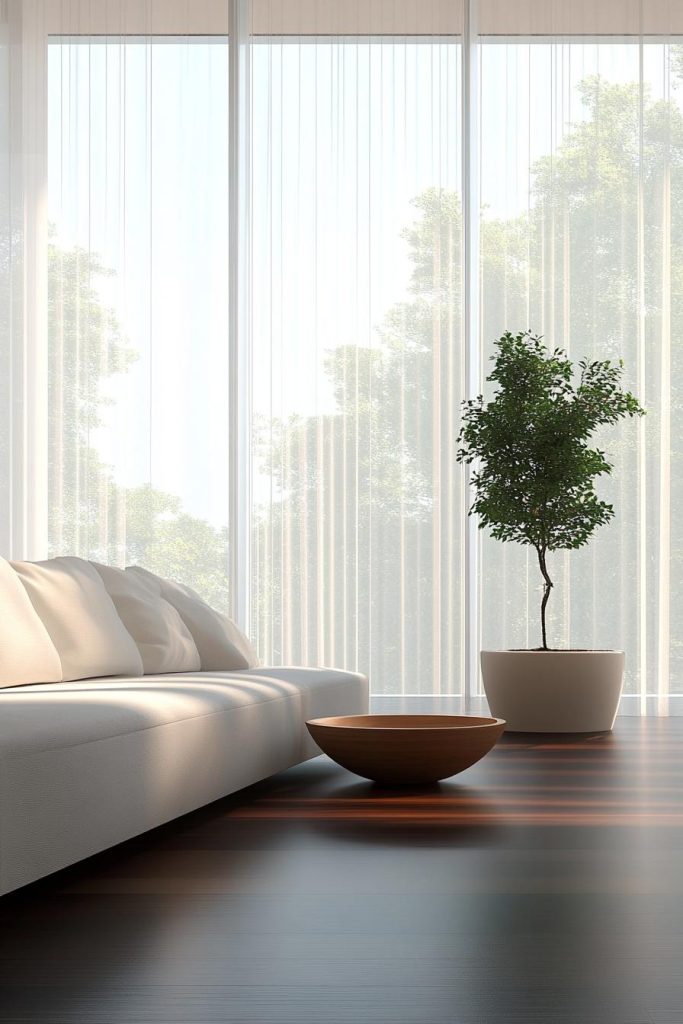
Easy Maintenance and Cleaning
One of the most practical advantages of minimalist design is the ease of upkeep. With fewer items, cleaning becomes less of a chore. Flat surfaces are easier to dust, floors aren’t blocked by bulky furniture, and there’s less opportunity for clutter to accumulate.
This simplicity extends to storage solutions as well. Integrated cabinetry, modular shelving, and multi-purpose furniture make tidying seamless and intuitive.
Budget-Friendly Potential
Minimalism encourages conscious consumption. Instead of filling your living room with trendy or disposable items, you invest in fewer, higher-quality pieces that last. While some minimalist furniture can carry a premium price tag, the overall philosophy is cost-effective: buy less, buy better, and buy only what you truly need.
Moreover, minimalist design often embraces vintage and repurposed elements, allowing you to find treasures without overextending your budget.
Planning Your Minimalist Living Room
Assessing Your Current Space
Before introducing anything new, it’s essential to understand what you already have. Walk through your living room with fresh eyes. Identify what feels essential and what feels like clutter. Take note of traffic flow, natural lighting, and focal points.
Ask yourself:
- Does this space feel open and functional?
- Is there anything I could remove without missing it?
- Are my furnishings aligned with my lifestyle?
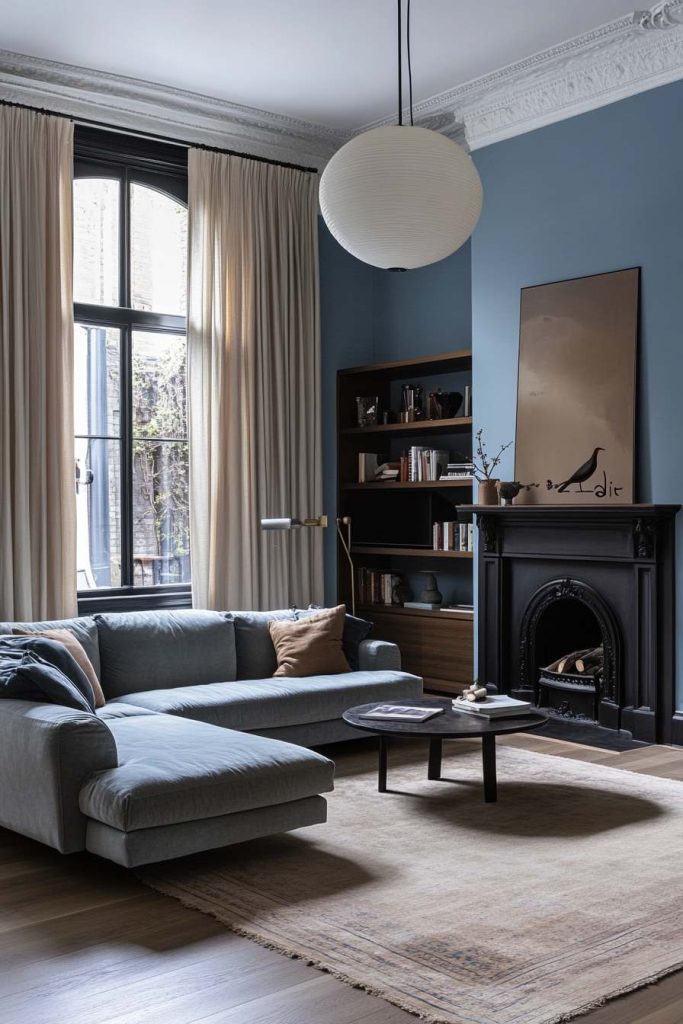
This exercise helps you reset your perspective and paves the way for intentional redesign.
Setting Design Goals and Priorities
Every minimalist space starts with a plan. Define what you want your living room to achieve. Is it a serene retreat? A flexible work-and-relaxation zone? A place to gather with friends in an uncluttered environment?
Set key priorities:
- Functionality
- Emotional tone (warm, airy, contemplative, etc.)
- Aesthetic vision (Scandinavian, Zen, modernist, etc.)
Establishing these early prevents impulse decisions and ensures each design choice supports your larger vision.
Creating a Mood Board
A visual reference keeps your ideas aligned and your project cohesive. Collect images, color swatches, fabric samples, and layout inspiration into a digital or physical mood board. Include examples of minimalist living rooms you admire and identify recurring elements.
This board becomes your guidepost—helping you resist over-decorating or veering off-style. It also helps you visualize how pieces will interact with one another in the final room.
Choosing a Minimalist Color Palette
Neutrals: Whites, Beiges, and Grays
Neutral tones are the backbone of minimalist design. They create a sense of serenity and continuity across a space. Whites and off-whites expand visual space and reflect natural light, making the room feel airy and open. Beiges and soft browns add warmth and comfort, preventing the space from feeling sterile. Cool grays introduce sophistication and modern edge.
These shades also serve as an ideal canvas for natural materials like wood, linen, stone, and metal.
Monochrome Schemes
Monochrome color palettes—such as all-whites, grays, or taupes—can create a strong visual impact when executed thoughtfully. Using various shades of a single color adds depth without overwhelming the senses. Play with finishes, textures, and subtle contrast within that color range to maintain visual interest.
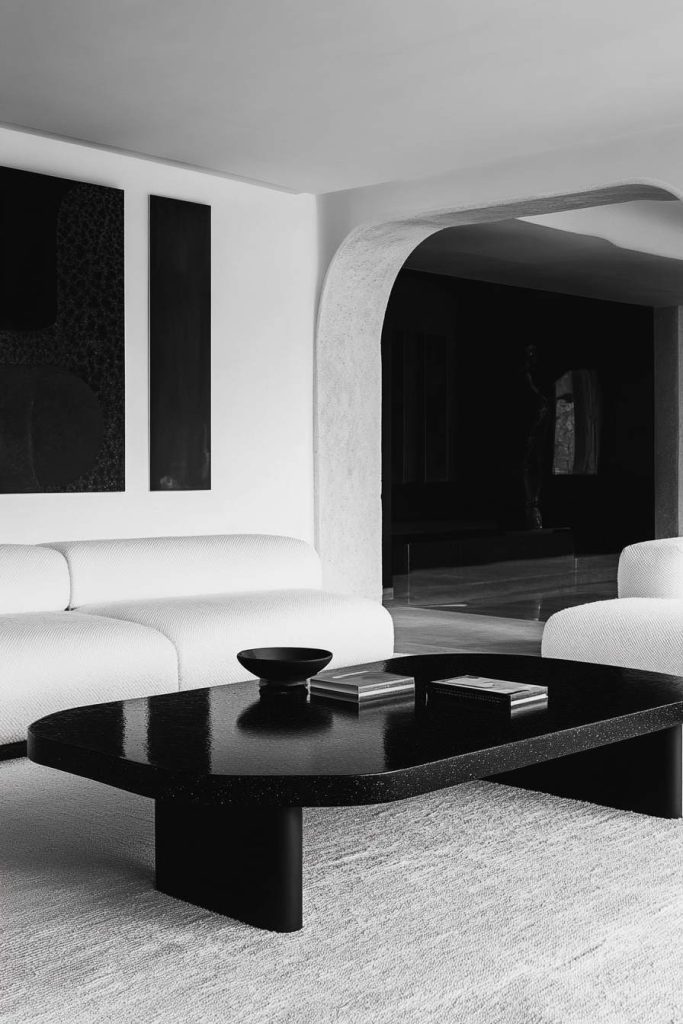
Monochromatic design isn’t about being bland—it’s about amplifying nuance.
Accent Colors in Moderation
While minimalist design relies heavily on neutrals, a well-placed accent color can add vibrancy and personality. Consider muted shades like olive, rust, navy, or dusky rose. The key is restraint: use color to highlight, not to dominate.
Accent pillows, vases, a single chair, or even a subtle wallpaper panel can be enough to infuse warmth without disrupting the minimalist ethos.
Furniture Selection for Minimalist Spaces
Essentials Only: The Power of Few
Minimalist furniture selections are curated and concise. Every piece must earn its place through utility and aesthetics. Start with the core items—a sofa, a coffee table, and perhaps a media console. Skip redundant or purely decorative pieces.
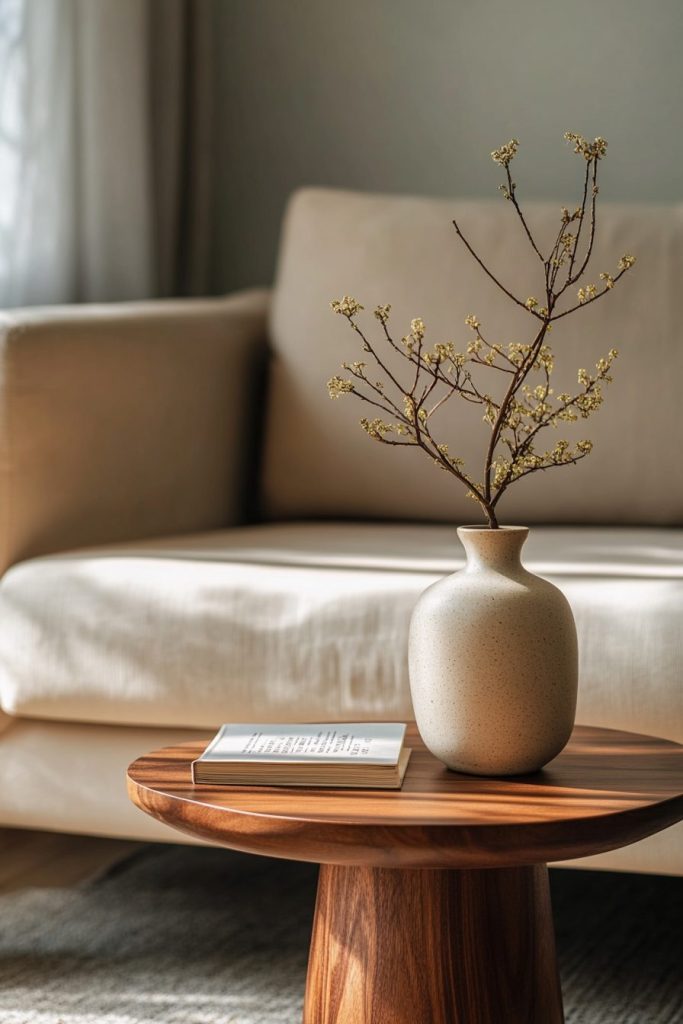
This approach not only saves space but allows each piece to shine. A well-chosen chair or a beautifully crafted side table becomes a feature, not background noise.
Multi-functional and Modular Furniture
Multi-functional furniture embodies the spirit of minimalist living. Think of sofas with built-in storage, coffee tables that convert into desks, or modular shelving that adapts to your changing needs.
Such pieces maximize utility without adding bulk, ideal for small spaces or dynamic households.
Streamlined Shapes and Low Profiles
Avoid overly ornate or bulky furniture. Instead, choose clean, linear silhouettes and items that sit closer to the ground. Low-profile furniture emphasizes horizontal space and fosters a feeling of openness.
Look for materials like metal, light wood, and neutral fabrics that complement the simplicity of form.
Layouts and Spatial Planning
Open Flow and Negative Space
Minimalist rooms are defined as much by what’s not there as by what is. Negative space—unoccupied areas around and between furniture—allows the eye to rest and the body to move freely. It also emphasizes the architectural elements of the room.
Arrange furniture to maintain visual breathing room. Avoid pushing every item against the wall or filling every corner.
Zoning Without Clutter
If your living room serves multiple functions—entertaining, relaxing, working—subtle zoning can help. Use area rugs, low open shelving, or differences in lighting to separate functional zones without closing off the space.
This allows for functional variety within the constraints of minimalist aesthetics.
Balanced Symmetry and Asymmetry
Symmetry creates order, while asymmetry adds character. A minimalist living room can blend both—maybe two armchairs flank a sofa (symmetry), while a floor lamp and tall plant balance the ends of the room (asymmetry).
Striking this balance keeps the space from feeling overly rigid or too chaotic.
Minimalist Lighting Strategies
Maximizing Natural Light
Natural light is a cornerstone of minimalist design. It enhances openness, highlights textures, and reduces the need for artificial lighting. To make the most of it:
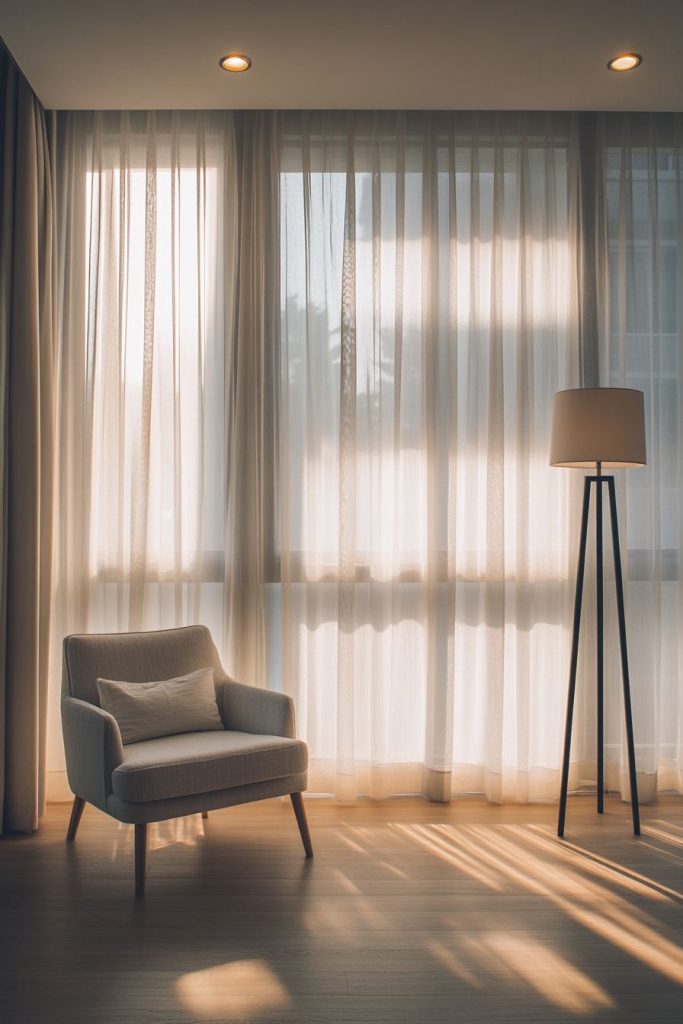
- Use sheer or light-filtering window treatments
- Keep window areas free from bulky furniture
- Incorporate mirrors to reflect daylight into darker corners
Sunlight has the power to transform even the simplest room into a glowing, dynamic space.
Selecting Simple Fixtures
Lighting fixtures in minimalist interiors are subtle but impactful. Look for pendant lights with clean lines, matte finishes, and geometric shapes. Avoid chandeliers or ornate sconces that may feel out of place.

Wall-mounted lights, recessed lighting, and adjustable floor lamps can all contribute to a cohesive look while serving practical needs.
Layered Lighting: Ambient, Task, Accent
Good lighting is layered. Even in a minimalist space, you’ll need:
- Ambient light: The base level, typically ceiling lights or soft overhead fixtures.
- Task light: Directed lighting for reading, working, or hobbies (e.g., desk or floor lamps).
- Accent light: Mood lighting that draws attention to features like artwork, shelves, or architectural elements.
This layered approach adds depth and functionality without compromising simplicity.
Wall Treatments and Decor
Bare Walls vs. Artful Simplicity
In minimalist interiors, walls are treated as intentional elements—not just surfaces to fill. While bare walls create a sense of openness and purity, they must be balanced with warmth to avoid a sterile feel. Artful simplicity means selecting one or two pieces of artwork or decor that resonate with the room’s theme, leaving plenty of space around them to breathe.
Bare doesn’t mean boring; it means deliberate. A thoughtfully empty wall can highlight a room’s architecture, its lighting, or the play of shadows throughout the day.
Single Statement Pieces
Rather than filling your walls with multiple decorations, choose a single impactful piece. This could be a large abstract painting, a minimalist line drawing, or a sculptural wall element. Oversized mirrors also work well, especially when they reflect light or enhance the sense of space.
A statement piece draws the eye, sets the tone, and elevates the overall design without visual clutter.
Texture Over Pattern
In minimalist spaces, texture becomes a substitute for pattern. Instead of busy prints, opt for subtle materials that engage the senses—limewashed walls, rough plaster, canvas, or matte ceramics. These create visual interest without overwhelming the room.
A wall finished in microcement or textured paint can add richness and warmth, maintaining the minimalist ethos while preventing monotony.
Flooring Options for Minimalist Living Rooms
Wood, Polished Concrete, and Natural Fibers
Flooring is the foundation of your minimalist space—literally and aesthetically. Choose materials that are neutral in tone but rich in texture.
- Wood flooring (especially light oak, walnut, or whitewashed planks) brings warmth and timelessness.
- Polished concrete offers a modern, industrial edge and works beautifully in loft-style or contemporary settings.
- Natural fiber floors, like sisal or jute, add an earthy, tactile quality.
These materials age gracefully and don’t require complex designs or inlays to make an impression.
Rugs: Neutral, Flat-Weave, and Area Focused
A rug in a minimalist room acts as an anchor. Choose flat-weave or low-pile rugs in soft, solid colors or subtle textures. Neutral tones like ivory, oatmeal, and soft gray work best.
Use rugs to define seating areas or transition between zones in open-plan living spaces. Avoid overly decorative patterns; instead, go for natural materials like wool, cotton, or hemp to stay aligned with minimalist values.
Decluttering and Storage Solutions
Built-In Storage Ideas
The minimalist approach to storage is “invisible yet accessible.” Built-in cabinetry, particularly when painted the same color as the walls, blends seamlessly into the space while providing ample storage.
Think floor-to-ceiling units with push-to-open mechanisms, integrated shelving around fireplaces or media walls, and even built-in window benches with hidden compartments.
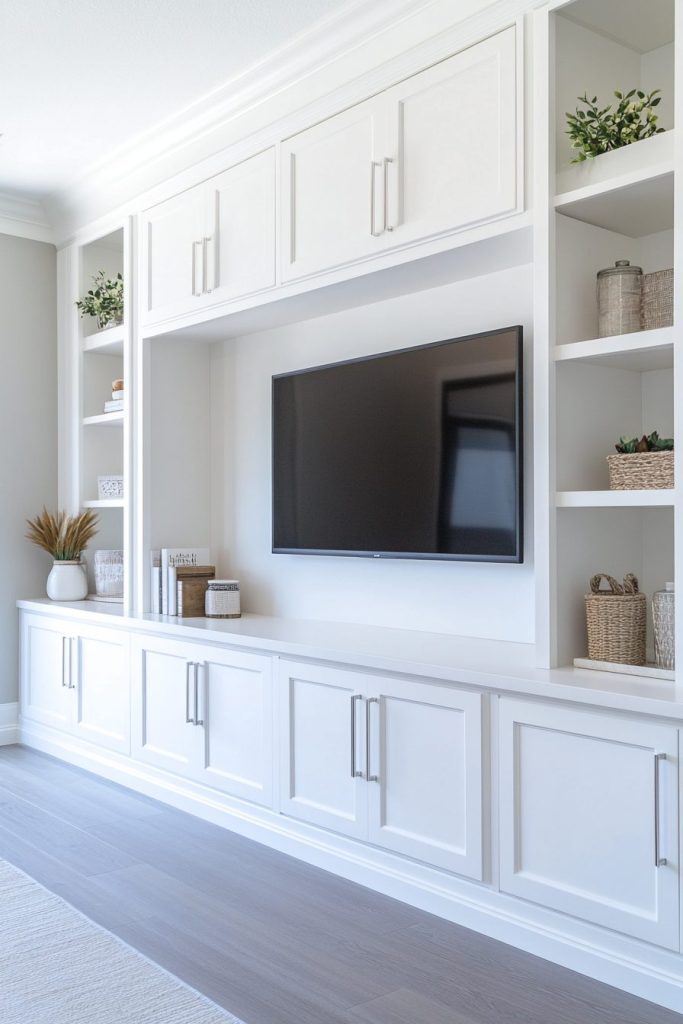
Hidden Compartments and Smart Shelving
Multi-purpose furniture and hidden storage add both function and form. Opt for:
- Coffee tables with interior compartments
- Sofas with hidden drawers
- Floating shelves with minimal brackets
Smart shelving, such as modular systems or wall-mounted boxes, allows flexible organization without visual clutter.
Organizing with Intention
Decluttering isn’t a one-time purge—it’s an ongoing practice. Adopt minimalist organizing principles:
- Keep like items together
- Store by frequency of use
- Maintain open space in storage zones
The goal is not to hide clutter but to eliminate the need for it. This clarity should extend from visible areas to inside your drawers and closets.
Minimalist Accessories and Styling
Sculptural Objects and Vases
Accessories in a minimalist living room are few but impactful. A single sculptural vase, a smooth stone, or a ceramic bowl can provide just enough visual punctuation. Go for organic forms, matte finishes, and materials like clay, wood, or glass.
Position objects in isolation rather than clusters, allowing them to stand out.
One-In, One-Out Rule
To avoid gradual clutter buildup, adopt the minimalist principle of one-in, one-out: for every new object you bring into your living room, one must be removed. This practice forces mindfulness and helps maintain equilibrium.
It’s not about strict limitation—it’s about sustaining harmony.
Greenery and Natural Elements
Plants bring vitality and warmth into minimalist spaces. Choose species that suit your lighting and lifestyle, such as:
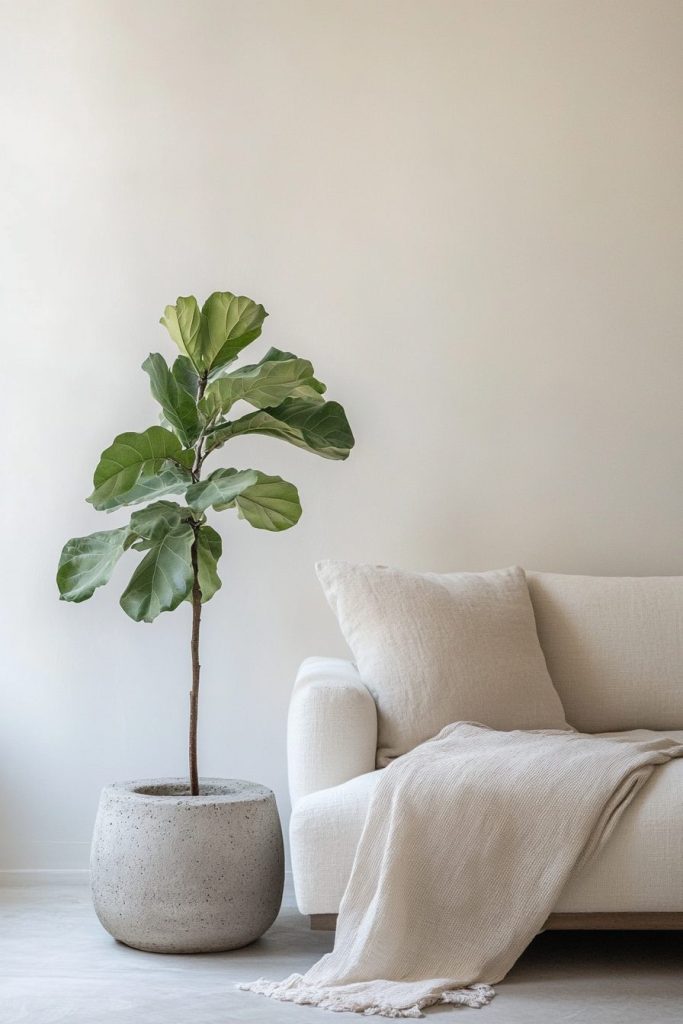
- Fiddle-leaf figs
- Snake plants
- Olive trees
- Monstera
Limit yourself to one or two large plants or a few small ones in grouped harmony. Choose planters that match your palette and aesthetic—terracotta, stone, or concrete work well.
Incorporating Technology Discreetly
Hidden Cords and Mounted Screens
Visible wires and bulky devices disrupt the flow of a minimalist space. Use cord management systems, in-wall conduits, or wireless devices whenever possible. Wall-mount your television and conceal its cables. Consider installing recessed outlets behind furniture.
Even sound systems and speakers can be hidden or integrated into shelving and walls.
Smart Systems Without Visual Noise
Smart homes and minimalism are not mutually exclusive. In fact, technology can enhance a minimalist lifestyle when it’s unobtrusive. Think:
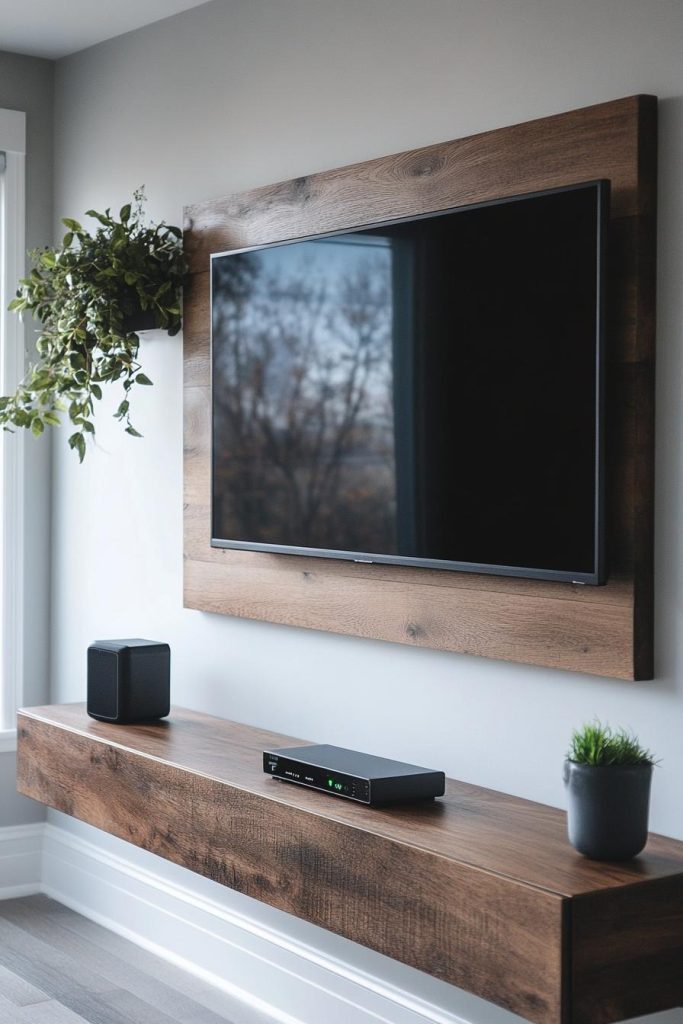
- Voice-activated lighting
- Invisible speakers
- Smart thermostats with subtle interfaces
Keep controls discreet, perhaps inside drawers or touch panels that blend with the decor.
Textures and Materials in Minimalism
Soft Contrasts: Linen, Wool, Cotton
Because color is often subdued, texture becomes the language of minimalist interiors. Use soft materials like:
- Linen: breathable and light, ideal for curtains and cushion covers
- Wool: cozy and rich, perfect for throws and rugs
- Cotton: clean and crisp for slipcovers and upholstery
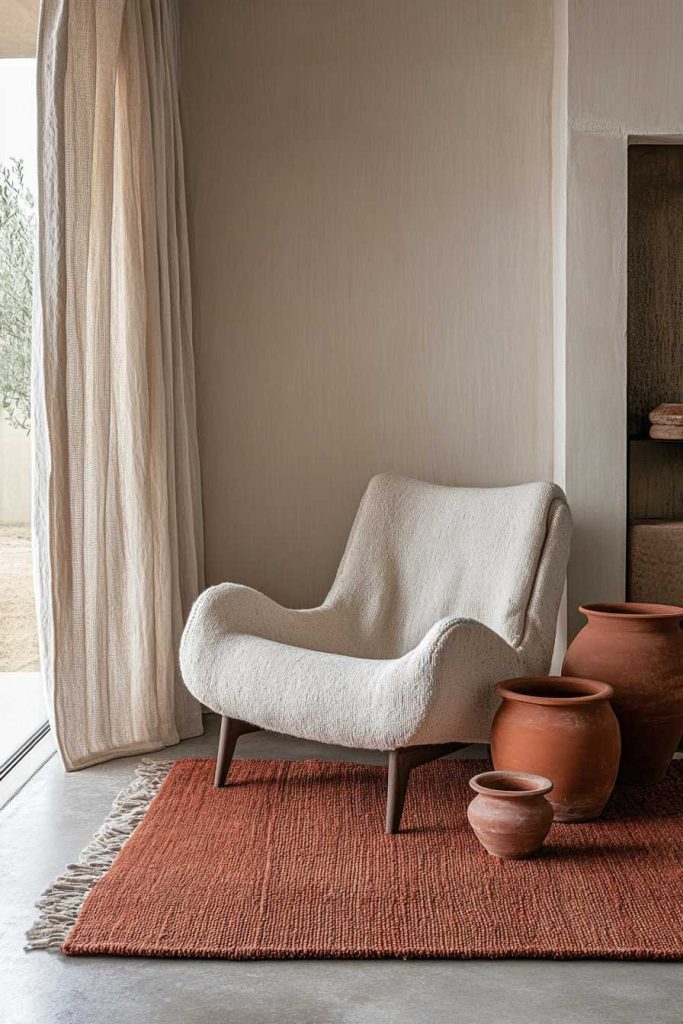
Layering these fabrics adds warmth without visual overload.
Matte vs. Glossy Finishes
A play between matte and glossy surfaces creates depth and dimension. For example, combine a matte-painted wall with a polished concrete floor or a satin-finish wood cabinet with a ceramic matte vase.
Use glossy finishes sparingly as accents—too much shine can clash with the restful tone of minimalist decor.
Organic vs. Industrial Materials
Minimalism thrives in contrasts. Mix organic materials like wood, rattan, or clay with industrial elements like metal, concrete, or glass.
This tension between soft and hard, warm and cool, adds sophistication to an otherwise restrained palette.
Personalizing a Minimalist Living Room
Memory-Driven Decor
A minimalist space doesn’t have to be impersonal. Include one or two pieces that carry emotional weight—a framed family photo, an heirloom textile, or a book collection with sentimental value.
Choose quality over quantity in your personal displays.
Intentional Sentimental Pieces
Be selective about what you keep on display. A single travel souvenir or a gift from a loved one can add warmth and narrative to your space—provided it aligns with your aesthetic.
Avoid cluttering shelves with too many keepsakes. Rotate items seasonally if you can’t decide.
Balancing Character with Simplicity
It’s a misconception that minimalism means stripping away personality. True minimalist design has character—it’s just more subtle. Personalize through:
- Custom artwork
- Handmade objects
- Architectural details
Maintain simplicity while celebrating your unique story.
Minimalism in Small Living Rooms
Tricks for Small Spaces: Mirrors, Light, Scale
Minimalism can transform small living rooms into airy sanctuaries. Use mirrors to reflect light and space, especially across from windows. Keep the color palette light and cohesive.
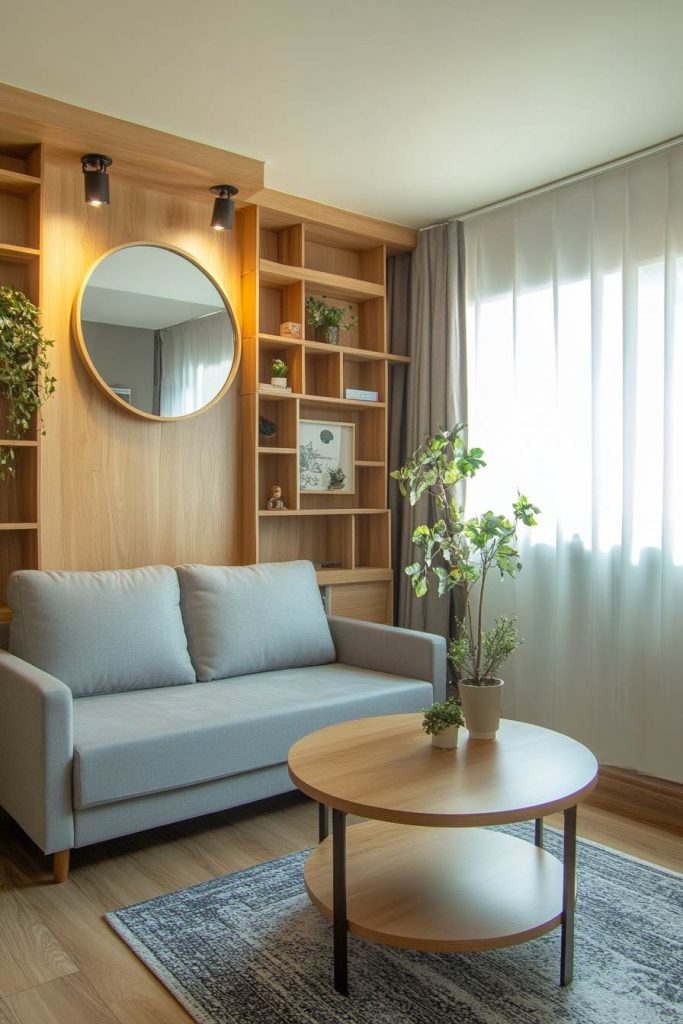
Choose furniture that fits the room’s scale—avoid oversized sofas or tables. Look for slender legs and open bases that don’t visually consume floor space.
Compact Furniture with Storage
Invest in pieces that serve dual purposes:
- Ottomans that double as storage
- Nesting tables
- Sofas with slim arms and integrated compartments
These save space and reduce the need for extra storage units.
Vertical Emphasis
Maximize wall space with vertical storage and visual elements. Floor-to-ceiling shelves or tall wall art draw the eye upward, making the room feel larger. Keep lower areas clear to enhance the sense of openness.
Common Mistakes in Minimalist Design
Overdoing the “Empty” Look
Minimalism is not about creating sterile or lifeless rooms. Too much white space, insufficient seating, or lack of texture can make the room feel cold. Balance emptiness with warmth, softness, and human touches.
A minimalist space should feel inviting—not like an empty showroom.
Ignoring Comfort for Aesthetics
In the pursuit of simplicity, comfort should not be sacrificed. Choose furniture that looks good but also invites relaxation. Ensure there’s enough seating, soft textiles, and ergonomic layouts.
Minimalism supports living, not limiting.
Misunderstanding Minimal vs. Bare
Bare rooms lack intent; minimalist rooms are filled with it. The difference is curation. Every empty corner in minimalism has a purpose—it lets other elements shine.
Avoid stripping away so much that the room feels incomplete. Thoughtful restraint, not emptiness, is the goal.
Global Influences on Minimalist Design
Japanese Zen
Zen minimalism values harmony with nature, clean architecture, and meditative calm. It uses natural wood, sliding partitions (shoji screens), and floor seating. Each element reflects mindfulness.
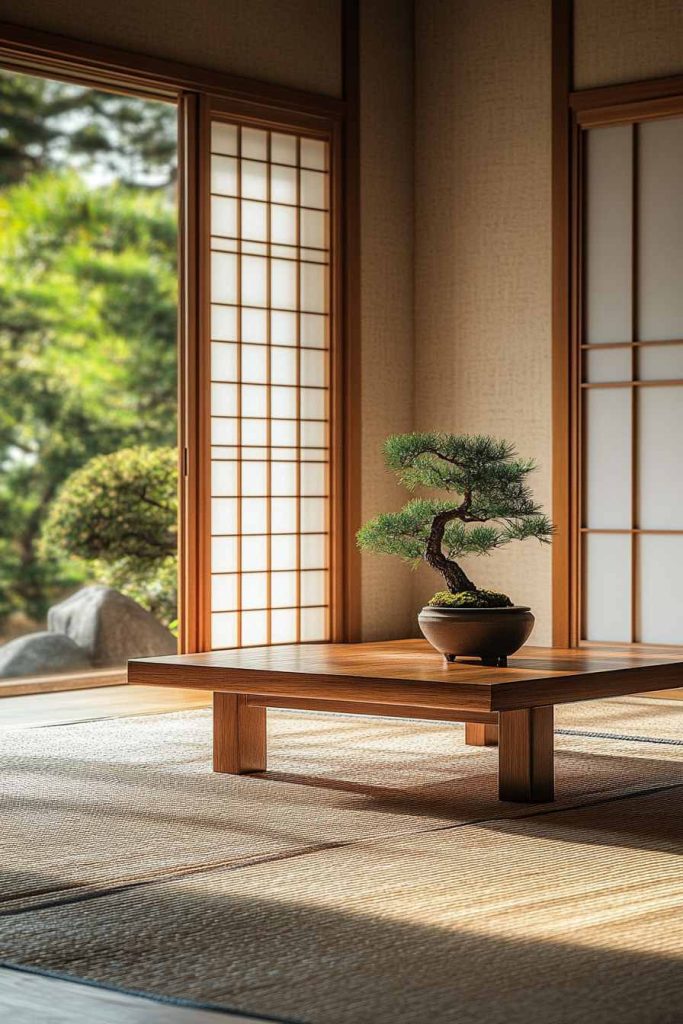
The philosophy is: “everything in its place, and a place for everything.”
Scandinavian Hygge
Scandinavian minimalism is rooted in warmth, light, and comfort. It pairs pale woods with soft textiles, cozy lighting, and simple furniture. The emphasis is on functionality and a cozy sense of well-being known as “hygge.”
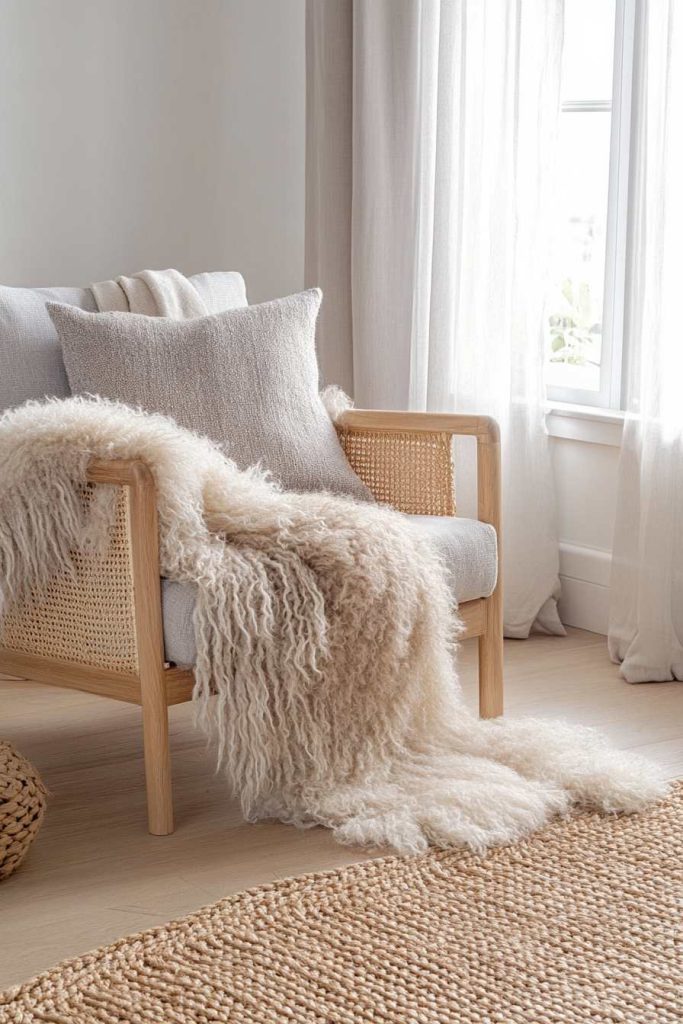
It’s minimalism with heart and soul.
Modern American Minimalism
Influenced by Bauhaus and mid-century modern design, American minimalism leans into clean lines, open plans, and functionalism. It emphasizes neutral palettes, industrial materials, and tech integration—all while leaving room for personal expression.
Sustainable Minimalist Design
Eco-Friendly Materials
Sustainability and minimalism are natural allies. Use materials that are:
- Recyclable or biodegradable (like bamboo, wool, cork)
- Free from harmful chemicals (low-VOC paints and finishes)
- Responsibly sourced (FSC-certified woods)
Choosing durability also reduces the need for replacements over time.
Local Sourcing and Upcycling
Buying local reduces carbon emissions and supports artisans. Consider reclaimed wood furniture, upcycled decor, or vintage finds repurposed for modern living.
These pieces add story and sustainability in one.
Timeless vs. Trendy
Minimalism favors timelessness over trends. Trendy pieces often fall out of fashion quickly, leading to waste. Instead, choose classic forms and neutral palettes that endure—and update accents if needed.
The goal is a space that lasts both physically and aesthetically.
Final Touches and Living with Minimalism
Seasonal Adjustments
Keep your minimalist living room fresh by rotating a few items with the seasons. Add a cozy wool throw in winter, a linen pillow in summer, or a branch of seasonal foliage.
This allows subtle renewal without compromising simplicity.
Daily Habits That Support Minimalism
A minimalist room requires minimalist habits. Build routines like:
- A quick daily tidy-up
- Weekly declutter checks
- Intentional shopping practices
Minimalism is a mindset as much as a method.
Enjoying the Calm
Ultimately, a minimalist living room is a space to breathe, reflect, and enjoy life with clarity. It invites you to slow down, appreciate your surroundings, and live intentionally—moment by moment.
Frequently Asked Questions (FAQ) – Minimalist Living Room Designs
What exactly is a minimalist living room?
A minimalist living room is a thoughtfully designed space that emphasizes simplicity, functionality, and visual calm. It features a neutral color palette, clean lines, uncluttered layouts, and carefully selected furniture and decor. The goal is to create a serene, spacious environment where every element serves a purpose.
Is minimalism the same as having an empty or boring space?
No. Minimalism is not about removing everything—it’s about keeping only what adds value and beauty. A well-executed minimalist room is rich in texture, warmth, and purpose, avoiding clutter without becoming sterile or dull.
Can a minimalist living room still feel cozy?
Absolutely. Minimalist spaces can feel very cozy when designed with soft materials, warm lighting, and a few personal touches. Elements like wool throws, textured cushions, ambient lamps, and warm-toned wood furniture create comfort without crowding the room.
How do I start transitioning to a minimalist living room?
Start by decluttering—remove items that are unused or visually distracting. Then, focus on essentials: a simple sofa, a functional table, and good lighting. Stick to a neutral color palette and gradually add intentional decor, such as a single piece of art or a plant.

